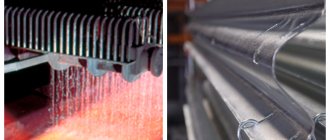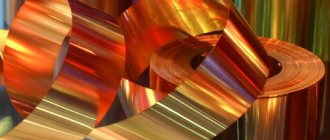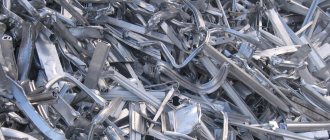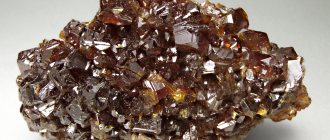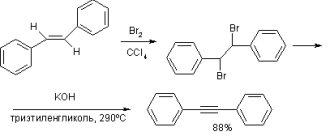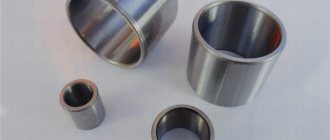Story
In the ancient world they knew brass (copper-zinc alloy). The Englishman William Champion managed to obtain zinc as a metal by the 18th century. He founded the first plant. Later, his compatriots developed a method of rolling metal.
However, the pioneer in history was the German Andreas Marggraff. He worked out a similar method, describing the technology in detail.
In Russia, a trial batch of zinc was received by 1905.
Ten years later, zinc was mined electrolytically in North America.
The terms zincum, zinken were first used by the chemist and physician of the Middle Ages Paracelsus. It is similar to the German word for "prong". This is what zinc metal fragments look like.
Characteristics and properties of brass
A copper-zinc alloy in which copper is the main component and zinc is the alloying component is called brass. The color of the metal depends on the composition and varies from light yellow tones to reddish shades. Such alloys are characterized by resistance to corrosion and have high strength. They lend themselves well to various processing methods. The fluidity of brass allows parts to be manufactured using the casting method. Using plastic deformation of the alloy, wire, sheets, tapes, and various profiles are produced from it by rolling. The zinc content in the alloy can vary and range from 5 to 45%. In addition, it also includes additional alloying components that are used to improve the properties of brass:
- Nickel. Helps increase corrosion resistance and strength.
- Silicon. Improves anti-friction properties.
- Tin. Affects strength and resistance to salt water.
- Lead. Improves machinability.
- Manganese. Affects strength and corrosion resistance.
When various combinations of alloying components are used, brass with the required qualities and characteristics is obtained. Products made from such alloys are not exposed to environmental influences and have high wear resistance.
Physico-chemical characteristics
When exposed to air, the shiny metal becomes coated with an oxide film. Due to this chemical property it looks dull.
| Properties of the atom | |
| Name, symbol, number | Zinc / Zincum (Zn), 30 |
| Atomic mass (molar mass) | 65.38(2) a. e.m. (g/mol) |
| Electronic configuration | [Ar] 3d10 4s2 |
| Atomic radius | 138 pm |
| Chemical properties | |
| Covalent radius | 125 pm |
| Ion radius | (+2e) 74 pm |
| Electronegativity | 1.65 (Pauling scale) |
| Electrode potential | -0.76 V |
| Oxidation states | 0; +2 |
| Ionization energy (first electron) | 905.8(9.39) kJ/mol (eV) |
| Thermodynamic properties of a simple substance | |
| Density (at normal conditions) | 7.133 g/cm³ |
| Melting temperature | 419.6 °C |
| Boiling temperature | 906.2 °C |
| Ud. heat of fusion | 7.28 kJ/mol |
| Ud. heat of vaporization | 114.8 kJ/mol |
| Molar heat capacity | 25.4 J/(K mol) |
| Molar volume | 9.2 cm³/mol |
| Crystal lattice of a simple substance | |
| Lattice structure | hexagonal |
| Lattice parameters | a=2.6648 c=4.9468 Å |
| c/a ratio | 1,856 |
| Debye temperature | 234K |
| Other characteristics | |
| Thermal conductivity | (300 K) 116 W/(m K) |
| CAS number | 7440-66-6 |
Interaction with metals begins at 450°C.
The main disadvantage of the metal : the increase in fragility by several times from a small amount of impurities.
When bending a zinc plate, you can hear a cracking sound. It is generated by the lattice structure.
Zinc casting alloys
The following requirements apply to alloys for injection molding. They have to:
- have excellent fluidity;
- do not react or weld to the mold;
- have a short crystallization interval;
- have strength at high temperatures.
Such alloys are used in the following cases:
- For injection molding of parts with complex configurations and thin walls. This is how brake equipment parts and pumps are produced using the properties of alloys, such as resistance to cracking, fluidity, and low melting point.
- For the production of cast decorative products. After galvanization, a beautiful and durable coating is installed on the surface. It may not be of very high quality if the surface is porous or contains excessive aluminum.
- For the production of antifriction zinc alloys used in mechanical engineering.
- For casting typographic fonts. With changes in technology, the need to manufacture them disappears.
Being in nature
The presence of native zinc in nature has not been recorded, only almost seven dozen minerals.
The most popular one is sphalerite. This is zinc sulfide plus impurities that give it different colors.
Sphalerite
The second name - zinc blende - is due to the difficulty of identifying the element (from the ancient Greek σφαλερός - deceiver). It is classified as the primary, “parent” of other minerals: smithsonite, zincite, calamine. And also “chipmunk” ore. This is how the inhabitants of Altai dubbed the motley conglomerate of zinc blende with brown spar.
How to distinguish zinc from aluminum?
Alternative options to answer the question of how to distinguish zinc from aluminum, available at home, are the following.
- Recognition by physical and chemical characteristics
Minimum school knowledge is sufficient to determine the composition and variety of an element. Aluminum has a silver tint, is light weight, and flexible. Zinc has a bluish tint, is heavier than the previous material, and does not bend under normal conditions. Fragile, breaks quickly.
- Determination by density parameters
To determine the type of metal by density, you will need a measuring cylinder and water. The essence of the technique is to gradually immerse the product in liquid. When a body is immersed in water, a certain amount of liquid is released. Using the simplest physical formula allows you to calculate the density of the material. The rest is left to the tabular data. If the resulting figure is close to 2.7/ml, then you have 100% aluminum.
- Metal detection by magnet
Many elements are attracted by a magnet. However, this property does not apply to Al. Therefore, to determine the quality characteristics, it is enough to bring a magnet to the product. If the metal does not react in any way, and it has a silvery tint, then this means aluminum.
The only negative aspect of the technique is the impossibility of isolating the alloy. If it contains a large amount of aluminum, the magnet will also have no effect on it. Therefore, additional methods will have to be used to determine the purity of the alloy.
- Thermal conductivity testing
The thermal conductivity parameters of aluminum are much higher than those of other elements of the periodic table. Therefore, the same volume of liquid under the same conditions in an aluminum pan is brought to a boil much faster. The maximum melting point of Al is 660 degrees.
- Recognition of aluminum by chemical methods
Al is easy to determine. It is enough to apply alkali to a previously cleaned surface. After some time, the surface will oxidize, which can be seen visually.
A similar reaction occurs when metal is exposed to acid, including lemon juice. The aggressive effects of acid are manifested by the appearance of dark gray spots that disturb the appearance of the product.
Reserves
Markers for zinc mining are acidic or basic rocks of volcanic origin.
The average metal content in the planet's crust is 8.3x10-3%.
This is a mobile active element: rivers, thermal waters, and groundwater transport it with lead, hydrogen sulfide, and clays. As a result, a precipitate of zinc sulfides is formed.
Australia, Bolivia, Kazakhstan, and Iran have large reserves.
In Russia it is Taimyr, Krasnoyarsk Territory. Reserves are estimated at half a million tons.
What is the melting point of zinc?
Zinc is an important element included in the periodic table. Its designation is Zn. Used in various industries. It is important for people working with this material to know the melting point of zinc, its chemical and mechanical properties.
Melting zinc
What is zinc
Zinc is a blue-white metal. It is number thirty on the periodic table. When the surface of a material interacts with oxygen, an oxide film forms on it. It hides the natural shine of the metal and protects it from oxidation.
Structure and composition
Zinc cannot be found in nature in its pure form. It will consist mostly of base metal, with additional impurities. These include silver, cadmium, lead, copper, iron. Depending on the percentage of additional elements, the material is marked.
Properties and characteristics
The characteristics of a metal depend on its composition. Depending on the physical and chemical properties, metallurgists determine where it is best to use the material to achieve the best efficiency.
Physical
The physical properties of a material determine its ability to change under the influence of external forces. These include:
- Easily dissolves in alkalis and acids.
- Melting point - 419 degrees Celsius. Melting characteristics may vary depending on the additives in the zinc composition. The material reaches high plasticity when heated to 100 degrees.
- Boiling point - 906 degrees.
- Has an average hardness rating.
- During cooling, the metal crumbles.
- Density - 7.133 g/cm3.
The mechanical properties of zinc are not suitable for the manufacture of wear-resistant parts. Under normal operating conditions, it breaks easily and is not resistant to shock or heavy physical stress.
Chemical
The chemical properties of a material are affected by the impurities contained in its composition. Average parameters:
- When temperatures drop, it loses its shine and becomes covered with an oxide film.
- Destroyed by prolonged exposure to moist air.
- An active metal that belongs to energy reducing agents.
- It is waterproofed when the metal is heated in water. During this process, a white precipitate is formed.
- Dissolves in powerful mineral acids.
The effect of alkalis and acids on the material depends on the percentage of foreign metal impurities.
Areas of use
Zinc is used in various industries. Speaking about the popularity of this material on a global scale, it ranks third in production among other non-ferrous metals. Areas of application:
- Metallurgy - used as a protective coating against corrosion for metal structures. Protects the base first in contact with aggressive environmental factors. Used in steel production.
- Jewelry making - used to restore gold and silver after their extraction.
- Pyrotechnics - used to create dyes for fireworks.
- Used when printing images in a printing house.
- Medicine - zinc is considered a high-quality antiseptic; it is added to various ointments and toothpastes.
Contained in the human body and food.
With the help of zinc, various hormones are synthesized, the metabolism of vitamins is improved, alcohol residues in the body are broken down, and prostate function is improved.
Metallurgy
in nature
Pure zinc cannot be found in nature. It is extracted from ores that contain impurities of other metals. The main deposits of the material are Russia, Iran, Bolivia, Australia, and Kazakhstan.
Historical reference
Zinc-based alloys with the addition of brass and copper have been known for a long time. They were used in Ancient Egypt, India, and Ancient Greece. Only by 1738 did people learn to obtain purer metal. For this purpose, the distillation method was used. By the 19th century, metallurgists learned to obtain pure zinc using the rolling process.
Production
To obtain pure material, two technologies are used:
- Electrolytic method. The mass obtained from the ore is placed in a container filled with sulfuric acid. A current is passed through the solution. The metal is separated from impurities. It is then baked using industrial ovens.
- Pyrometallurgical method. First, firing is carried out. Next, coke coal is used to restore the finished mass. The last stage is the settling process.
During roasting of ore, gas is released that contains large amounts of sulfur. It is used to create sulfuric acid.
Zinc is a popular non-ferrous metal. It is inferior to aluminum and copper in terms of production. Weak mechanical properties do not make it bad. The material has found its application in various areas of industry.
Receiving technology
Due to its chemical and physical properties, the metal is the fourth most popular in the world (only iron, aluminum, and copper are ahead). World production amounts to millions of tons annually.
It is mined from polymetallic ores (0.9-3.9% zinc). Ores are enriched by separation flotation. The resulting concentrates are: zinc (52-61%), lead, copper.
Electrolytic (hydrometallurgical) method
The main method for obtaining pure zinc:
- The concentrates are fired and treated with sulfuric acid.
- The result is dissolved sulfate, which is removed from impurities by precipitating with zinc dust.
- The product is loaded into baths with an internal lead or plastic coating.
- The current is started (electrolysis process).
- Zinc is accumulated on cathodes.
From there it is scraped off and sent for smelting in a furnace.
Pyrometallurgical (distillation) method
The concentrate is fired, sintered, and then reduced with coke or coal. The resulting metal vapors are converted into condensate and poured into molds.
Liquid metal is purified from iron and lead by settling at 500°C. Impurities remain at 1.3%. Purity of 99.994% (plus cadmium extraction) is achieved by rectification.
Application area
All of the above characteristics have allowed TsAM to become widespread in various types of production. Among them the following stand out:
- TsAMs are most widely used in the automotive industry. They are used to produce thin-walled carburetor and pump housings, radiator grilles and hydraulic brake elements.
- The bearing industry uses the alloy as a material for the manufacture of plain bearings and monometallic liners.
- In textile production, due to the ability of alloys to convey complex shades well, zippers, snaps and buttons are made.
- In the food industry, the alloy can be found as a material for parts of refrigerators, dishwashers and other household appliances.
- The trigger mechanism of small arms is produced from TsAM.
- Door fittings: handles, hinges, lock elements, etc.
- Fishing gear: reels, fishing rod elements, etc.
- You can increasingly find TsAM in watch movements.
- All kinds of souvenirs and toys.
Galvanizing methods
Metals rust in water and humid air. To solve this problem, they are coated with a protective layer. The most common material is zinc. At the same time, protection against exposure to current and chemicals is provided.
Various methods of galvanizing metal create a coating with a thickness of 0.005 - 1.5 mm.
The metal layer is applied in several ways.
Cold
Can be used on any materials except magnesium alloys and high-strength steel.
The surface is cleaned of dust, dirt, rust, and scale. Apply the composition for cold galvanizing.
Cold galvanizing is the only method that can be carried out in a home workshop.
Hot
The sample is cleaned, washed, etched, and immersed in a bath of molten zinc. A coating of 0.035-0.097 mm is formed on the surface.
The hot galvanizing method is optimal in terms of price – reliability – versatility.
Galvanic
A layer of zinc is applied to the cleaned surface by electrolysis. The electrolyte is a water-zinc medium.
The impact of direct current on the surface of the workpiece (cathode) deposits zinc ions (released by the electrolyte). The anode is zinc material.
The technology allows you to create a layer of 0.005 - 0.5 mm.
Advantages of the method:
- High performance.
- Low cost.
- Uniform coverage.
- Work with forms of any structure, including porous ones.
- Creation of decorative galvanization.
These characteristics have made the method the most popular.
Disadvantages: harmful to the environment, fragility of the product if the technology is violated.
Gas-thermal
A jet of zinc suspension is sprayed onto the surface of the product at an angle.
Minuses:
- Uneven layer thickness.
- Difficulty of process control.
- Expensive (three to four times) compared to other methods.
Plus: suitable for processing products of any shape and size. Thermal diffusion
The retort with the charge and samples is placed in a chamber equipped with an inductor. The heat from the retort and products heats the charge.
In the magnetic field of the inductor, currents are formed in the products, heating them to 500-800°C in half an hour.
Result: 98% of the top coating layer is pure zinc.
The thickness of the metal layer in the thermal diffusion method is determined by the parameters of the products, the charge, heating time, and temperature.
Zinc compounds.
Zinc forms numerous binary compounds with nonmetals, some of which have semiconducting properties.
Zinc salts are colorless (if they do not contain colored anions), their solutions have an acidic environment due to hydrolysis. Under the action of solutions of alkalis and ammonia (starting from pH ~ 5), the main salts precipitate and transform into hydroxide, which dissolves in an excess of the precipitant.
Zinc oxide
ZnO is the most important industrial zinc-containing compound. As a by-product of brass production, it became famous before the metal itself. Zinc oxide is obtained by burning zinc vapor in air, which is formed during the smelting of ore. A purer and whiter product is produced by burning vapors obtained from pre-purified zinc.
Typically, zinc oxide is a white, fine powder. When heated, its color changes to yellow as a result of the removal of oxygen from the crystal lattice and the formation of a non-stoichiometric phase Zn1+ x
O(
x
Ј 7.10–5). Excessive amounts of zinc atoms result in lattice defects that trap electrons, which are subsequently excited when visible light is absorbed. By adding a 0.02–0.03% excess of metallic zinc to zinc oxide, you can get a whole spectrum of colors - yellow, green, brown, red, but the reddish shades of the natural form of zinc oxide - zincite - appear for another reason: due to the presence manganese or iron. Zinc oxide ZnO is amphoteric; it dissolves in acids to form zinc salts and in alkalis to form hydroxinates, such as [Zn(OH)3]– and [Zn(OH)4]2–:
ZnO + 2OH– + H2O = [Zn(OH)4]2–
The main industrial application of zinc oxide is in rubber production, in which it reduces the vulcanization time of the original rubber.
As a pigment in the production of paints, zinc oxide has advantages over traditional lead white (basic lead carbonate), due to the lack of toxicity and darkening under the influence of sulfur compounds, but is inferior to titanium oxide in terms of refractive index and hiding power.
Zinc oxide increases the life of glass and is therefore used in the production of special glasses, enamels and glazes. Another important area of application is in neutralizing cosmetic pastes and pharmaceutical preparations.
In the chemical industry, zinc oxide is usually the starting material for the production of other zinc compounds, in which soaps (ie fatty acid compounds such as stearate, palmitate and other zinc salts) are the most important. They are used as paint hardeners, plastic stabilizers and fungicides.
A small but important application of zinc oxide is the production of zinc ferrites. These are spinels of the ZnII x
MII1–
x
FeIII2O4, containing another doubly charged cation (usually MnII or NiII). At x = 0 they have an inverted spinel structure. If x = 1, then the structure corresponds to normal spinel. A decrease in the number of FeIII ions in tetrahedral positions leads to a decrease in the Curie temperature. Thus, by changing the zinc content, it is possible to influence the magnetic properties of ferrites.
Zinc hydroxide
Zn(OH)2 forms as a gelatinous white precipitate when alkali is added to aqueous solutions of zinc salts. Zinc hydroxide, like the oxide, is amphoteric:
Zn(OH)2 + 2OH– = [Zn(OH)4]2–
Used for the synthesis of various zinc compounds.
Zinc sulfide
ZnS is released as a white precipitate when soluble sulfides and zinc salts react in an aqueous solution. In an acidic environment, zinc sulfide precipitate does not form in an acidic environment. Hydrogen sulfide water precipitates zinc sulfide only in the presence of weak acid anions, for example, acetate ions, which reduce the acidity of the medium, which leads to an increase in the concentration of sulfide ions in the solution.
Sphalerite ZnS is the most common zinc mineral and the main source of the metal, but a second natural, although much rarer, form of wurtzite is also known, which is more stable at high temperatures. The names of these minerals are used to refer to crystal structures, which are important structural types found for many other AB compounds. In both structures, the zinc atom is tetrahedrally coordinated by four sulfur atoms, and each sulfur atom is tetrahedrally coordinated by four zinc atoms. The structures differ significantly only in the type of close packing: in wurtzite it is cubic, and in sphalerite it is hexagonal.
Pure zinc sulfide is white and, like zinc oxide, is used as a pigment; for this purpose it is often prepared (as lithopone) together with barium sulfate by reacting aqueous solutions of zinc sulfate and barium sulfide.
Freshly precipitated zinc sulfide easily dissolves in mineral acids with the release of hydrogen sulfide:
ZnS + 2H3O+ = Zn2+ + H2S + 2H2O
However, calcination makes it less reactive and is therefore a suitable pigment in children's toy paints as it is harmless if swallowed. In addition, zinc sulfide has interesting optical properties. It turns gray when exposed to ultraviolet radiation (possibly due to dissociation). However, this process can be slowed down, for example, by adding traces of cobalt salts. Cathode, X-ray, and radioactive radiation produce fluorescence or luminescence of various colors, which can be enhanced by adding traces of various metals or by replacing zinc with cadmium and sulfur with selenium. It is widely used for the production of cathode ray tubes and radar screens.
Zinc selenide
ZnSe can be precipitated from solution as a lemon-yellow, difficult-to-filter precipitate. Wet zinc selenide is very sensitive to air. Dried or prepared dry, it is stable in air.
Zinc selenide single crystals are grown by directional crystallization of a melt under pressure or by vapor deposition. Zinc sulfide is used as a laser material and a component of phosphors (together with zinc sulfide).
Zinc telluride
ZnTe, depending on the production method, is a gray powder that turns red when rubbed, or red crystals, and is used as a material for photoresistors, infrared radiation receivers, dosimeters and radiation counters. In addition, it serves as a phosphor and semiconductor material, including in lasers.
Zinc chloride
ZnCl2 is one of the important zinc compounds in industry. It is obtained by the action of hydrochloric acid on secondary raw materials or roasted ore.
Concentrated aqueous solutions of zinc chloride dissolve starch, cellulose (which is why they cannot be filtered through paper) and silk. It is used in the production of textiles, in addition, it is used as an antiseptic for wood and in the manufacture of parchment.
Since zinc chloride easily dissolves oxides of other metals in the melt, it is used in a number of metallurgical fluxes. Using a solution of zinc chloride, metals are cleaned before soldering.
Zinc chloride is also used in magnesium cement for dental fillings, as a component of electrolytes for electroplating and in dry cells.
Zinc acetate
Zn(CH3COO)2 is highly soluble in water (28.5% by weight at 20° C) and many organic solvents. It is used as a fixative for dyeing fabrics, a wood preservative, an antifungal agent in medicine, and a catalyst in organic synthesis. Zinc acetate is a component of dental cements and is used in the production of glazes and porcelain.
When zinc acetate is distilled under reduced pressure, the basic acetate [Zn4O(OCOMe)6] is formed; its molecular structure includes an oxygen atom surrounded by a tetrahedron of zinc atoms connected along the edges by acetate bridges. It is isomorphic to basic beryllium acetate, but unlike it, it quickly hydrolyzes in water, this is due to the ability of the zinc cation to have a coordination number above four.
Organozinc compounds
. The discovery in 1849 by the English organic chemist Edward Frankland (1825–1899) of zinc alkyls, although not the first synthesized organometallic compounds (Zeise's salt was obtained in 1827), can be considered the beginning of organometallic chemistry. Frankland's research pioneered the use of organozinc compounds as intermediates in organic synthesis, and his measurements of vapor density led him to the proposition (crucial in the development of the theory of valency) that each element has a limited but definite strength of affinity. Grignard reagents, discovered in 1900, have greatly supplanted zinc alkyls in organic synthesis, but many of the reactions in which they are now used were first developed for zinc compounds.
Alkyls such as RZnX and ZnR2 (where X is halogen and R is alkyl) can be prepared by heating zinc in boiling RX under an inert atmosphere (carbon dioxide or nitrogen). Covalent ZnR2 are non-polar liquids or low-melting solids. They are always monomeric in solution and are characterized by linear coordination of the zinc atom
C–Zn–C. Organozinc compounds are very sensitive to air. Low molecular weight compounds spontaneously ignite, producing zinc oxide smoke. Their reactions with water, alcohols, ammonia and other substances proceed similar to Grignard reactions, but less vigorously. An important difference is that they do not react with carbon dioxide.
Where is it used?
The properties of the metal, its alloys, and compounds determined their use in metallurgy, electrical engineering, and medicine.
Pure metal
Main directions:
- Negative electrode of batteries, accumulators.
- Reducer of precious metals.
- Protective coating of steel against corrosion.
- Component of hard solders to increase fusibility.
- Metal extractor from rough lead.
Until the mid-20th century, a popular area of application for zinc was printing. The zincography method was used to create black and white illustrations in newspapers or books. An image was etched onto a zinc plate with acid. Then impressions were made from it on a printing machine.
Zinc ingots
Alloys
Zinc is in demand as a component of metal alloys. For example, brass.
It is used by machine builders for precision casting:
- Automotive accessories.
- Carburetor box shell.
- Bolts of traumatic pistols.
A fifth of the raw materials are used for the production of tires and oil paints.
Connections
Metal compounds created by nature or man have found application:
- Chloride – metal soldering, fiber production.
- Telluride, selenide, phosphite are semiconductors.
- Selenide is used in the manufacture of special types of glass for lasers.
- Oxide is the source material for zinc white.
- Sulfide is a component of phosphors (flexible panels, screens).
Metal phosphite is used to kill rodents.
Properties of zinc alloys
Excellent casting properties of the alloys are noted. Due to their high ductility when hot, metals are used for casting parts with complex shapes, deep cavities, threads and thin wall thickness. They do not stick to the mold because they do not react with the iron. Casting parts have high precision and clean surface. The alloys have excellent mechanical properties: sufficient tensile strength, hardness and are well processed. They can be soldered and welded.
Disadvantages include susceptibility to aging, high density and corrosion. When using zinc alloys, their natural aging process occurs, as a result of which the parts decrease in size. The largest shrinkage occurs in the first 5 weeks, and subsequent shrinkage occurs over a very long period of time. To compensate for the dimensions of the parts, they are subjected to heat treatment - annealing. To reduce corrosion in alloys, the magnesium content is limited to 0.1%. To increase the durability of parts, they are subjected to protective coatings: nickel-plated, chrome-plated, cadmium-plated.
Meaning for humans
Zinc is an essential component of body tissue. The second most abundant microelement after iron. Without it, proteins and nucleic acids are not synthesized.
Life processes
The metal is involved in the following processes:
- Tissue regeneration.
- Metabolism of vitamin E.
- Synthesis of testosterone, insulin, growth hormones, etc.
- Alcohol breakdown.
- Functioning of the prostate, sperm production.
The human body of average build contains up to 2 g of zinc compounds.
Places of metal accumulation are muscle tissue, liver, pancreas, prostate.
Nutrition
The daily “standard” of zinc for women/men is 9/12 mg.
Rich in zinc:
- Pumpkin and sunflower seeds.
- Meat.
- Hard varieties of cheese.
- Oysters.
- Oatmeal.
- Peas, beans, chickpeas, mung beans.
- Bitter chocolate.
Zinc deficiency causes irritability and depression. On the physical plane – anemia, unmotivated exhaustion, amnesia, weakened vision, allergies.
The use of metal in medicine is zinc oxide (zinc ointment). This is a popular antiseptic and anti-inflammatory agent.
Content in the human body and food
The human body typically contains about two grams of zinc. Many enzymes contain this metal. The element plays a role in the synthesis of important hormones such as testosterone and insulin. The element is essential for the full functioning of the male genital organs. By the way, it even helps us cope with a severe hangover. With its help, excess alcohol is removed from our body.
Lack of zinc in the diet can lead to a variety of dysfunctions in the body. Such people are prone to depression, constant fatigue, and nervousness. The daily norm for an adult man is 11 milligrams per day, for a woman - 8 milligrams.
Content in products (in milligrams per 100 grams of product):
- oysters - 40 mg;
- bran - 16 mg;
- pumpkin seeds - 10;
- beef liver - 8 mg;
- beef - 8 mg;
- lamb - 6 mg;
- sunflower seeds - 5 mg;
- cheese - 4 mg;
- oats - 4 mg;
- chicken - 3 mg;
- walnuts - 3 mg;
- beans - 3 mg;
- pork - 3 mg;
- chocolate - 2 mg;
- corn - 0.5 mg;
- bananas - 0.15 mg.
An excess of the element in the human body also leads to serious problems, so you should not store food in zinc containers.
It is easy to distinguish aluminum from other metals due to its lightness. The metal is widely used and is in demand in the industrial and food industries. It is not difficult to distinguish zinc from aluminum on your own. To do this, it is enough to have the necessary knowledge and techniques. We invite you to familiarize yourself with them in more detail.
Warning
Uncontrolled entry of metal into the body causes poisoning. It is generated by sulfates or chlorides. They can form when storing food in galvanized containers.
Symptoms of zinc vapor poisoning:
- Intense thirst.
- Sweetish taste in the mouth.
- Loss or decrease in appetite.
- Dry cough.
The person feels overwhelmed and tired. Feels drowsy, chest pain.
For severe poisoning, 1 gram of zinc sulfate is sufficient.
You need to remove toxins immediately. Their presence provokes anemia, growth inhibition, and infertility.
Melting point and specific heat capacity of zinc
The melting point of zinc is one of the lowest among metals used in industry – 420 °C. At lower temperatures, tin (232 °C) and lead (327 °C) melt.
The melting point of zinc is one of the lowest.
By adding tin to zinc, you can lower the melting point to 199 °C, and in combination with tin and lead - to 150 °C. The melting point of alloys is lower than that of each individual element.
A little history
R. Maggraf was the first to develop a method for obtaining pure zinc.
The metal was isolated in its pure form in laboratory conditions by distillation. This happened in Great Britain in 1738. After numerous experiments in 1743.
The British developed an industrial method for producing zinc. Three years later, in Germany, zinc was obtained from its salts by calcining them without access to oxygen. The resulting metal vapor condensed in the refrigerator.
Later, electrochemical technology and technology for producing metal by rolling when heated to 100–150 °C were developed.
In Russia, the first zinc ingot was obtained in 1905. Ancient people, not knowing about the existence of zinc, noticed that the inclusion of this element along with lead in copper ore significantly reduces the melting point of copper. Therefore, at a certain historical stage, copper turned out to be more in demand than iron, which melts at a higher temperature.
Description and physical characteristics of zinc
- Zinc does not occur in nature in the form of nuggets. To date, 66 types of minerals containing this element are known. Most often they are found in acidic and volcanic rocks, in thermal waters, and can lie in deep layers of the earth’s crust, from where they are carried away by groundwater.
- The most common mineral is “zinc blende”. It contains zinc sulfide and various impurities. Impurities give minerals different color shades, so it is easy to be “deceived” and incorrectly recognize this mineral, which complicates its search and extraction.
- A fresh ingot has a silvery color, but very quickly, like aluminum, lead, and tin, it becomes covered with an oxide film and becomes dull.
- The specific heat of fusion of zinc is 122 kJ/kg. It determines the amount of energy required to melt 1 kg of zinc heated to its melting point. The specific heat of fusion of zinc is quite high, it is 2 times greater than that of tin and 5 times greater than that of lead.
- The specific heat capacity of zinc is 400 J/(kg*°C). The value determines the amount of energy to increase the temperature of a metal weighing 1 kg by 1 °C. It coincides with the specific heat capacity of copper and brass. For lead and tin, the specific heat capacity is equal to 140 and 230 J/(kg*°C), respectively.
The specific heat of fusion of zinc is 122 kJ/kg.
The given values show that melting zinc requires high energy consumption.
Application of zinc and its alloys
Zinc is one of the most sought after elements. It ranks 3rd in terms of production volume among non-ferrous metals. The championship belongs to copper and aluminum. But in its pure form it is rarely used: at high temperatures the metal becomes soft, and at low temperatures it becomes brittle. The process where it is used in its pure form is the recovery of precious metals from pure lead.
About 40% of the metal produced is used to protect steel structures from mechanical damage and corrosion. The high degree of anti-corrosion protection is explained by greater chemical activity than iron. Therefore, the zinc layer reacts earlier than the main structure.
https://www.youtube.com/watch?v=o74G0zUgqTY
Previously, printing houses used zinc ink for printing. Currently, it is classified as a harmful substance and other dyes are used instead.
But zinc white is still used today, although its production is declining. Their main advantage is their high adhesion to the painted surface, providing high-quality coating.
Whitewash is resistant to ultraviolet radiation and retains its color for a long time.
Zinc dust is used in pyrotechnics and fireworks. It gives the flame a bluish tint.
Zinc is widely used by humans.
Zinc alloys are much more often used. They have a high melting point and mechanical strength. Additives include copper, lead, tin, aluminum, and magnesium.
Alloys are widely used in the automotive and aviation industries, and in the production of household appliances.
Current sources with electrodes made of mercury-zinc and silver-zinc alloys have become widespread.
Due to its low melting point, scrap zinc can be melted at home. Heaters can be the flame of a fire, a gas burner, a blowtorch, or an autogen.
You can melt zinc on an electric stove or in a microwave oven. To collect the melt you need iron utensils.
Zinc vapor poses a health hazard, so smelting should be carried out outdoors or in a well-ventilated area.


